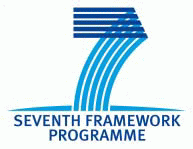Participation in the Projects
PHOtonic tools for Quantitative imaging in tissUeS
Marie Curie Initial Training Network, Seventh Framework Programme Innovative PhD Doctoral Training Programme on Photonics Tools
The PHOtonic tools for Quantitative imaging in Cells and tissUeS (PHOQUS) project will seed a revolution in the development and application of novel imaging modalities and multimodalities to enable the quantitative investigation of biological processes at multiple size regimes from the molecular and cellular to the tissue and organ level scale, by training graduates in life or medical sciences, or physics or engineering for the first time to integrate seamlessly photonics, nanotechnology, advanced spectroscopy and novel spectral regions with the latest advances in live imaging and diagnostics. The photonics focus on new tools and sources will open up opportunities to investigate the mechanisms and nuclear dynamics that control spindle formation and chromosome separation during mitosis as well as cell migration dynamics and mechanics during early embryonic development and the development of cancer in the gut. PHOQUS will utilise the world-class extensive expertise in Life Sciences, pioneering surgical / image interventional technologies and nanomedicine within the Medical School and advanced Photonics at the University of Dundee to deliver an Innovative interface science Doctoral Training Program. This 3-year PhD programme is a new, highly innovative scheme to train postgraduate students as truly interdisciplinary scientists at the interface between physics / photonics and live imaging methodologies in life sciences and medicine. PHOQUS will benefit from the close involvement of 10 Associate Industrial and 9 Associate Academic Partners distributed over 7 European countries. The Associate Partners will provide academic and commercial expertise as well as training for key aspects of the project.
For more information please visit PHOQUS project webpage
TERAHERTZ IMAGING SYSTEM MAINTAINED BY CHIRPED OPTICAL PULSES (TERAOPT)
Objective of the project is:
To develop a fast, compact and relatively inexpensive terahertz range imaging system,
applying optical mixing of chirped pulses from fibre laser for the generation of narrow bandwidth terahertz pulses in an ultrafast semiconductor switch.
TERAOPT project is partly funded by "Mokslo Inovacijų ir Technologijų Agentūra" (MITA).
Novel Compact Terahertz Sources Based on Dual Wavelength Lasers and Photomixers
Developing low cost technologies for the fabrication of compact room temperature submillimeter terahertz (THz) sources operating at 0.3 - 3 THz and beyond.
- Novel, efficient and low?cost THz transceiver devices for "next generation" security & medical imaging and spectroscopy devices
- Ultra compact, room temperature devices operating over a tunable THz frequency range
- Coherent THz radiation generated in novel semiconductor materials driven by highpower laser sources and efficient "quantumdot" lasers
- Non invasive, localised diagnosis and investigation of skin, gastric, cervical and colon cancers
Marie Curie Industry-Academia Partnerships and Pathways
 |
 |
 |
Seventh Framework Programme, The People Programme
The TERA project has received funding from the European Community's Seventh Framework Programme (FP7 People 2011 IAPP) under Grant Agreement no 285974
Inočekiai LT
Nuo 2012-12-03 iki 2013-01-31 buvo įgyvendinamas projektas dalinai finansuotas iš Europos regioninės plėtros fondo ir Lietuvos Respublikos valstybės biudžeto, pagal veiksmų programą VP2-1.3-ŪM-05-K "Inočekiai LT".